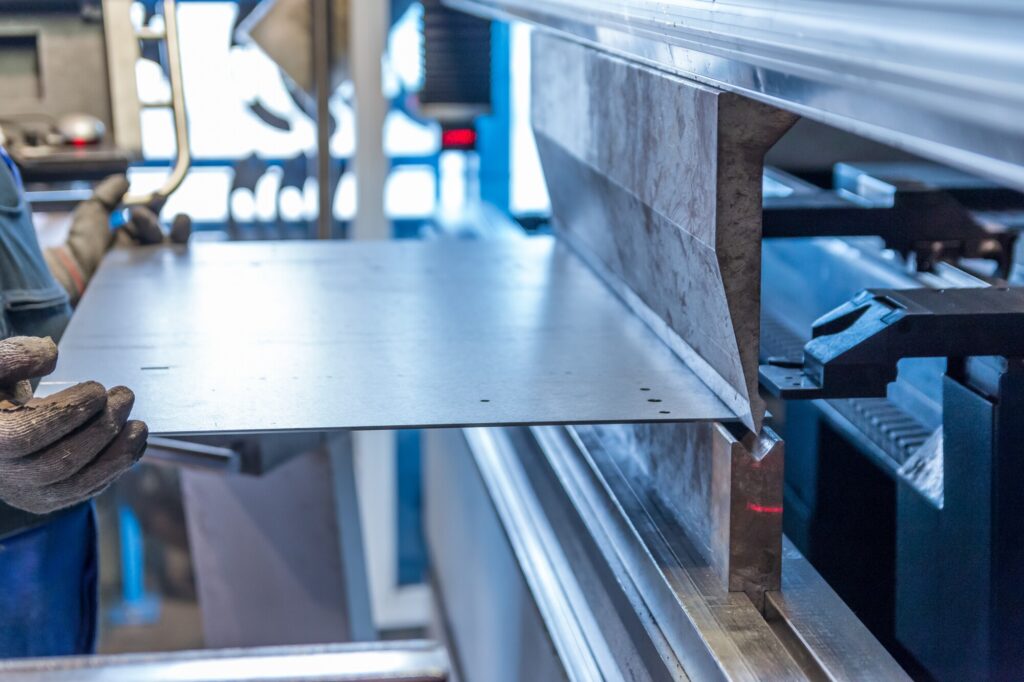Alpha Reo: Blazing A Trail in Reinforced Steel Solutions
Alpha Reo: Blazing A Trail in Reinforced Steel Solutions
Blog Article
Cutting-edge Trends in Steel Construction: Enhancing Sturdiness and Precision
In the realm of steel fabrication, the quest of toughness and accuracy has actually led to a wave of innovative trends that are reshaping the industry. These trends are not just shaping the present however likewise laying the foundation for the future of steel construction, assuring more improvements in longevity and accuracy.
Advanced Welding Technologies
In the world of steel manufacture, the fostering of advanced welding technologies has considerably reinvented the market's technique to accomplishing remarkable high quality and precision in structural welds. Advanced welding technologies, such as laser beam welding and friction mix welding, have actually become game-changers in the field. Laser beam welding employs a concentrated laser light beam to sign up with metal components with remarkable precision and rate, making it optimal for thin materials and intricate layouts. On the various other hand, friction stir welding develops exceptionally strong bonds by mechanically intermixing the molecules of the products at the joint, getting rid of the need for thawing the metal. These innovations supply various benefits, consisting of minimized heat-affected zones, marginal distortion, and improved mechanical properties in the bonded joints. By leveraging these sophisticated welding strategies, steel producers can elevate the durability, stamina, and precision of their architectural welds, meeting the significantly demanding needs of contemporary construction jobs.
Robotic Automation in Manufacture
Embracing robotic automation has actually become a foundation of modern-day steel manufacture practices, enhancing and improving processes effectiveness throughout the sector. Robotics are revolutionizing the method steel elements are produced, supplying unrivaled precision and speed while minimizing human mistake. These automated systems can manage recurring jobs with regular precision, bring about better final result.
One key advantage of robotic automation in steel fabrication is the ability to work around the clock without fatigue, significantly enhancing manufacturing result. This continuous procedure minimizes downtime and increases task timelines, inevitably saving prices for producers. Additionally, robots can be set to perform intricate jobs that might be tough or unsafe for human workers, improving security in the office.
Additionally, robotic automation allows smooth integration with other digital modern technologies, such as computer-aided design (CAD) software application and Net of Things (IoT) systems (steel fabrication melbourne). This interconnected strategy enhances communication between various phases of manufacture, optimizing process and making sure real-time surveillance and control. As the steel fabrication industry continues to develop, robot automation attracts attention as a transformative pressure driving efficiency and precision in manufacturing processes

High-Strength Alloy Growth
The innovation of high-strength alloy growth in steel manufacture is improving the sector's strategy to boosting product longevity and efficiency. High-strength alloys are crafted to display remarkable mechanical buildings, such as raised tensile toughness, durability, and rust resistance compared to conventional steel grades. By including these innovative alloys right into construction processes, manufacturers can generate parts that stand up to higher stress degrees and rough atmospheres, resulting in even more sturdy and trusted output.
One trick advantage of high-strength alloy development is the ability to reduce material thickness without endangering structural integrity. This not just results in lighter-weight parts yet additionally adds to set you back savings and boosted effectiveness in fabrication and setting up processes. In addition, the improved strength-to-weight proportion of these alloys enables the design and building and construction of structures with greater load-bearing capacities while decreasing general weight.
3D Modeling and Simulation Software
Developments in steel construction processes have been substantially driven by the assimilation of sophisticated 3D modeling and simulation software program devices. These devices enable makers to produce in-depth online designs of their jobs, enabling them to imagine the final product with accuracy prior to any type of physical job begins.

Sustainable Practices in Steel Production
Including sustainable techniques into steel manufacturing procedures is necessary for minimizing ecological influence and making sure long-term source availability. One essential lasting technique is the fostering of energy-efficient technologies to lower greenhouse gas exhausts throughout the steel manufacturing procedure. This consists of making use of renewable resource resources, such as solar or wind power, to power steel plants and executing energy-efficient tools to enhance power use.
Another important aspect of sustainable steel production is the accountable sourcing of raw materials. This involves making sure that the iron ore and various other resources utilized in steelmaking are gotten from environmentally friendly and honest resources. By advertising transparency in the supply chain and adhering to strict ecological standards, steel producers can lessen the negative impacts of resource removal on neighborhood communities and areas.

Final Thought
Finally, the innovative fads in steel manufacture such as sophisticated welding modern technologies, robotic automation, high-strength alloy development, 3D modeling and simulation software application, and sustainable techniques are improving the sturdiness and accuracy of steel products. These innovations are transforming the steel manufacture industry by boosting quality, performance, and sustainability. It is clear that the future of steel fabrication hinges on welcoming these cutting-edge innovations to satisfy the needs of contemporary building and construction and manufacturing markets.
In the realm of steel manufacture, the search of resilience and accuracy has actually led to a wave of innovative patterns that are improving the industry.In the world of steel construction, the fostering of sophisticated welding technologies has dramatically revolutionized the market's technique to attaining exceptional top quality and precision in architectural welds. As the steel fabrication industry proceeds to advance, robot automation stands steel fixing out as a transformative force driving efficiency and precision in producing procedures.
In addition, reusing and recycling steel scrap and waste products play a considerable duty in improving the sustainability of steel manufacturing. steel fixing.In verdict, the ingenious fads in steel fabrication such as sophisticated welding modern technologies, robotic automation, high-strength alloy growth, 3D modeling and simulation software application, and sustainable techniques are enhancing the longevity and precision of steel products
Report this page